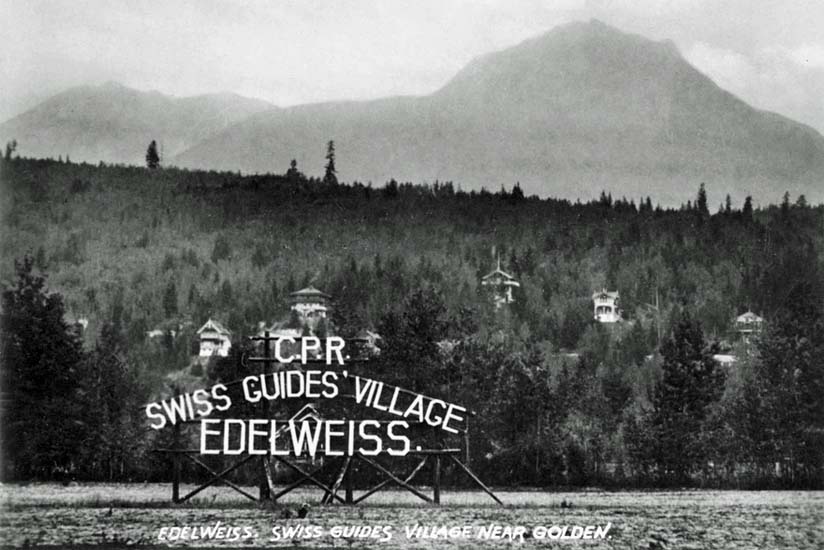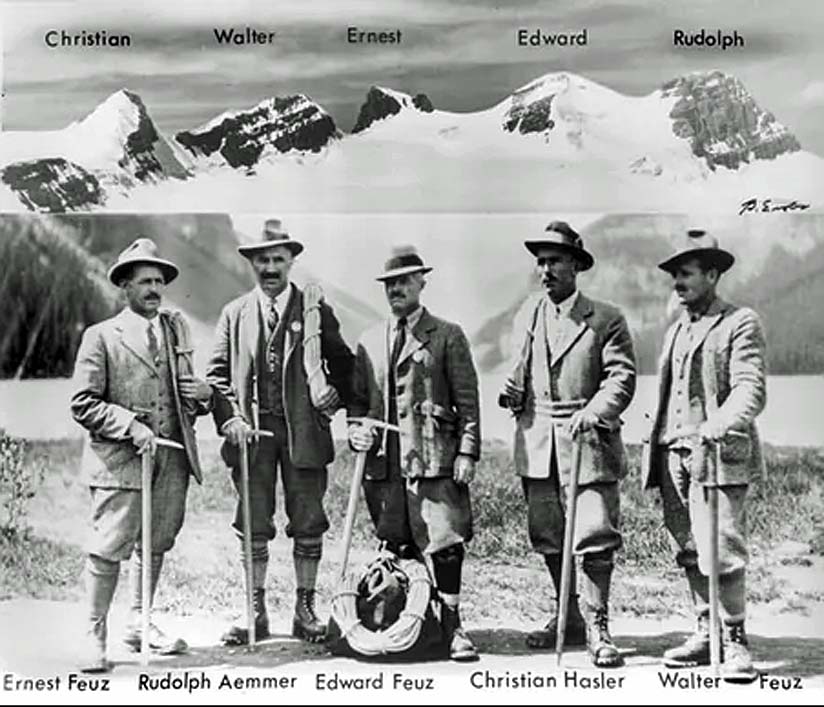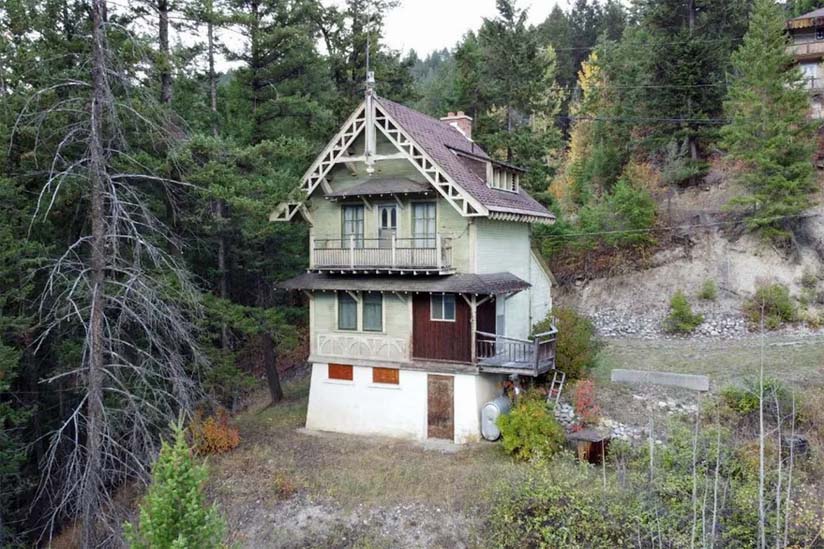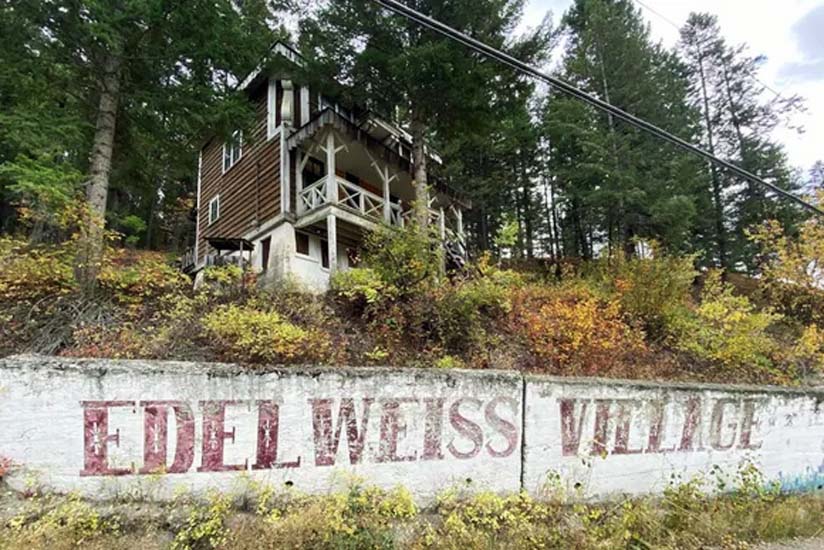
Switzerland
Golden British Columbia - The future of six historic chalets in the Canadian village of Golden hangs in the balance as they go up for
sale.
Can this Swiss-Canadian cultural heritage be saved?
"An incredibly unique opportunity to own Canadian history" is how the real estate agency describes the chalets in the Rocky Mountains.
All six are currently for sale for the asking price of $2.3 million.
What is being extolled as Canadian history is, in fact, also part of Swiss history, as the chalets are part of the legacy of Swiss Alpine guides in the
province of British Columbia.
Around 1900, the Swiss were hired by the Canadian Pacific Railway (CP) to help tourists wend their way up the many challenging mountain peaks in the
region.
The chalets were their homes.
The local museum now fears that the sale will result in the loss of the historic buildings, and with them, an important part of Golden's history.
This concern, along with a recent short documentary film about the future of Edelweiss Village, as the homes are known collectively, prompted Johann Roduit, a
member of the Council of the Swiss Abroad, to organize a virtual panel discussion last November.
Building Canadian Mountain Culture
At the turn of the 20th century, Swiss mountain guides enjoyed a singular reputation worldwide.
They were experts in their field, with countless first ascents of 3,000 metre peaks in the Rockies to their name.
They helped to make Western Canadian mountain culture what it is today.

As evidence of the Swiss alpinists' lasting impact, numerous peaks have been named after them.
"They did incredible things," says Ilona Spaar, author of the book "Swiss Guides".
As she points out, in more than 50 years of Swiss mountain guiding in the Rockies, not a single fatal mountaineering accident occurred among the thousands of
ascents they led.
The guides started out as seasonal workers at the end of the 19th century, working in the Rockies between the months of May and September.
In an age when travel was arduous and slow, this arrangement put great strain on the men themselves and their families back home.
As Spaar wrote, "they did not want to leave their wives and children behind in Switzerland for so long."
So the CP came up with the idea of building permanent homes for the guides and their families.
This is how Edelweiss Village, a picturesque Swiss colony in Golden came to be.
The railway company needed the Swiss guides, who were seen as a real attraction at the time.
As one of them Ed Feuz Jr. once said, "In Switzerland, we were just normal people. In London and Canada, we were curiosities."

There was also a strong element of show and marketing in all of this, according to Spaar.
For example, the design of the chalets has little in common with authentic Swiss buildings.
Nonetheless, they have intricate woodwork, wooden staircases, and breathtaking views from every window.
Moderate Success
Despite being on the main railway line, Golden was isolated at the time, and stood to gain from having resident Swiss mountain guides.
Even today, the place is nowhere near as big a tourist draw as Lake Louise, some 80 kilometres away.
All the more reason then for the local museum, as well as Roduit of the Swiss Abroad Council and the author Spaar, to believe that this historic site has huge
potential.
By 1912, the six chalets in Edelweiss Village were ready for the Swiss guides and their families to move into.
But there was a snag, the village was built on a hillside above the railway tracks, two kilometres west of the village of Golden.
This was too far from the centre for most of the women and children, especially before the advent of the motor car.
To make matters worse, the houses were draughty and cold in winter, and very hot in summer.
Over time, the Swiss families started moving to the centre of Golden.
Thanks to the descendants of Walter Feuz, all of the original buildings of Edelweiss Village are still standing.
Feuz's own chalet has been preserved just as it was when his family lived there, decorated with memorabilia from the early days of Swiss
mountaineering.
Now, however, the six buildings are to be sold off as a package.
Who Will Save This Piece of History?
"Historical heritage should not stop at national borders," says Roduit.
Switzerland has cultural assets all over the world.
As a newly elected member of the Council of the Swiss Abroad, he is intent on championing Swiss cultural heritage around the world.
In his view, Edelweiss Village is also part of Swiss history.
"Many people have come to look at the chalets in recent months," the real estate agent explains in the documentary.
Among them were numerous experts on the protection of historical buildings.
In the end, however, it all boils down to cost.
"It is clear that a lot of money will have to be invested," says Spaar.
"The houses are very old."
There is great hope in Golden that the chalets can be physically preserved, and perhaps even opened to the public.
"It is difficult, and also frustrating, to see that this piece of history cannot be saved because of a lack of money," museum director Brittany
Newman laments in the documentary.
For her the path is clear, the buildings should be heritage-listed.

Edelweiss Village is a real patchwork of history, says Spaar, as it combines family history, local history, immigration history, mountaineering history
in Western Canada, tourism history, and architectural history.
"My great hope is that local tourism, on the rise because of Covid, will discover and understand the history and value of Edelweiss Village," she
says.
During the virtual panel discussion, the idea of preserving the homes digitally was considered.
All the speakers in the documentary film also agree, digital preservation is better than nothing.
However, it can never replace the actual experience of seeing, smelling, and stepping into the houses and their history.
The perfect solution, in their eyes, is both physical and digital preservation.
Whether someone will step up to preserve this piece of history remains to be seen.
Melanie Eichenberger.
(there was no image with original article)
(usually because it's been seen before)
provisions in Section 29 of the Canadian
Copyright Modernization Act.
